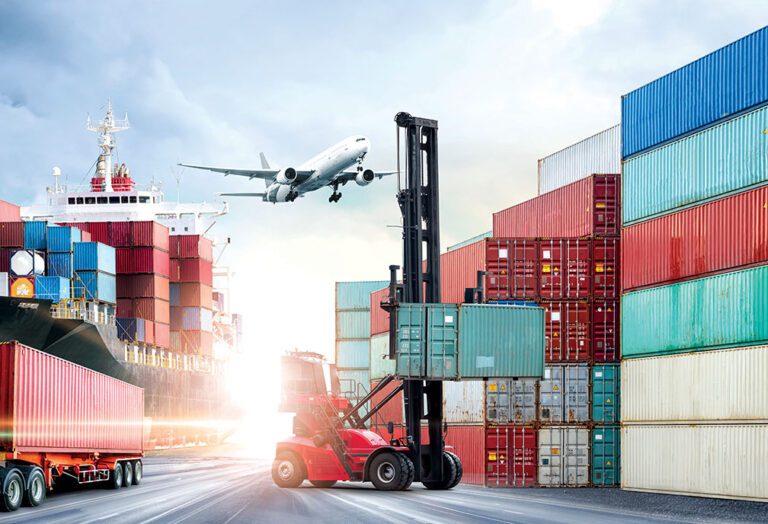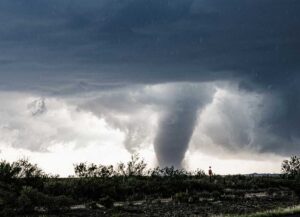It’s been over a year since Brian Deese, then the director of the National Economic Council, and U.S. Secretary of Transportation Pete Buttigieg met with stakeholders to discuss the early progress of the Freight Logistics Optimization Works (FLOW) program.
The initiative, intended to speed the movement of goods and reduce the delays and costs in getting products to Americans, is based on information sharing — specifically, exchanging information about freight between various sectors of the supply chain.
Essentially, FLOW is an effort to move transportation logistics to 21st-century digitization.
“FLOW is a collaborative effort to combine disparate supply and demand data so that shippers and carriers can foresee and adapt to potential supply chain bottlenecks,” said Andrew Damkroger, director of logistics for Werner Enterprises. Werner was among the first stakeholders to sign onto FLOW.
Over the past year, FLOW participants have been working with officials to build on the program’s potential.
“It’s still in its infancy, but the amount of collaboration and willingness to share in hopes of contributing to the greater good has been very promising,” Damkroger said, noting that, during the next year, stakeholders hope to see the program seek scalability.
In April, Buttigieg told Congress that the voluntary program will soon expand.
“We brought in a number of players from across the sector — retailers, ports, anybody who we think has data that, if they were just talking to each other more, would make our ports more efficient and our supply chains more fluid,” Buttigieg said. His comments were largely based on the current number of participants in the FLOW program compared to when it was initiated.
The program has grown from just 18 participants upon launch to 53 a year later, and that number is expected to steadily increase. Participants come from all sectors of the supply chain and include beneficial cargo owners (i.e., retail businesses), intermodal equipment providers, logistics real estate, and marine terminal operators, in addition to carriers in all sectors — motor, ocean, railway, and third-party logistics.
Buttigieg says upgrades to the FLOW system will enable other types of products to be analyzed, including agricultural commodities.
“We are working toward being able to have a prototype of that model up and running this year,” he said. He noted that the budget request for the upgrades will be small compared to other supply chain improvements. One of those is a $230 million request to improve programs aimed at making commercial port freight movement more efficient.
Buttigieg has taken time to defend the administration’s record on improving supply chain activity to date, noting that tiny ports, like the one in Helena, Arkansas, have been improved, as have large ports like Portsmouth, Virginia.
The key component of FLOW is centralization — not of location of cargo and infrastructure, but rather centralization of data. The Bureau of Transportation Statistics collects information voluntarily supplied by FLOW participants and is using it to develop a dataset on the level of other commonly referred to economic indicators. Doing this allows FLOW participants to track the activity of the supply chain on a broad level while also assisting in planning for individual sectors of the supply chain.
Over time, FLOW will also improve the stakeholders’ ability to react to future supply disruptions, whether those disruptions are caused by pandemics, climate and weather conditions, or other factors. As mentioned in a White House news release, “FLOW is designed to support businesses throughout the supply chain and improve accuracy of information from end-to-end for a more resilient supply chain.” A more resilient supply change means efficient freight movement, stocked shelves, cheaper prices, and higher consumer satisfaction.
In addition to easing freight congestion and streamlining movement, the FLOW program has been scrutinized for other advantages it might bring for the industry.
One of those advantages involves emissions and climate. The International Transport Forum has suggested that a fully operational freight data system would lead to a 22% reduction in global supply chain carbon emissions by 2050. Likewise, the supply chain improvements would reduce ocean freight emissions by 280 million tons per year and freight carrier emissions by 260 million tons. It is estimated that such streamlining would save 2.5 billion barrels of oil annually.
Reaching those goals, however, would require participation in a large freight data exchange network as a condition of accessing ports. In other words, the voluntary nature of data exchange in the current FLOW program would become mandatory. It is yet to be determined if stakeholders would continue to have the buy-in FLOW now enjoys.
Buttigieg has already noted that willingness to share what stakeholders see as proprietary data is a potential detriment to FLOW. “One possible obstacle I can see eventually is, as we grow it people start to be kind of jealously protective of their data,” he said in the fall of 2022. Still, Buttigieg has made efforts to appease company executives’ concerns.
“We’re not going after anybody’s proprietary data,” he said. “We’re just trying to get information that it would make sense for everybody to have.”
He further suggested that reluctance to share data could be a problem in the FLOW program — but for the time being it’s a new program with optimistic participants.
“It’s so new that I’m very satisfied with the level of participation we got and very mindful of that it is on us to, I think, get these prototypes going,” he said.
Werner’s Damkroger agrees.
“The program is on track. It’s been a well-coordinated effort,” Damkroger said, adding that FLOW has been a challenge and an ambitious undertaking with many potential pitfalls. “The FLOW team has done a wonderful job of getting us to a point where we are looking to scale and obtain some critical mass.”
FLOW remains in its early stages, and the impacts are not yet measurable. But as a stakeholder, Damkroger has high hopes for the program.
“The vision would enable demand predictability,” he said.
This article originally appeared in the July/August 2023 edition of Truckload Authority, the official publication of the Truckload Carriers Association.
Since retiring from a career as an outdoor recreation professional from the State of Arkansas, Kris Rutherford has worked as a freelance writer and, with his wife, owns and publishes a small Northeast Texas newspaper, The Roxton Progress. Kris has worked as a ghostwriter and editor and has authored seven books of his own. He became interested in the trucking industry as a child in the 1970s when his family traveled the interstates twice a year between their home in Maine and their native Texas. He has been a classic country music enthusiast since the age of nine when he developed a special interest in trucking songs.








